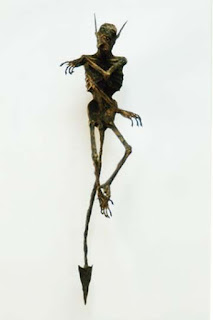Cryptzoology Explained
Cryptozoology can be translated from Greek to mean “the study of hidden animals”. Cryptozoology is a pseudoscience, as the animals that cryptozoologists focus on have no physical evidence according to mainstream biology. These are animals, creatures and humanoids that appear in myths, legends and fairytales.
Animals that are studied by cryptozoologists are often referred to as cryptids. Examples of cryptids are the Loch Ness Monster, Big Foot and the Chupacabra. The term can also be used for fairies, ogres, goblins and elves. The search for living specimens of creatures that are believed to be extinct, such as dinosaurs, the quagga or the dodo bird, can also be classified as cryptozoology. Many scientists criticize the ’science’ of cryptozoology, as cryptozoologists rely on anecdotal information such as myths, legends and folklore, instead of physical evidence or fact.
Creatures from Mythology and Fantasy
Fairy tales have existed for centuries as part of mythology, folk lore and children's stories. Most of the creatures in these tales have some inhumane ability such as flying or performing magic. Other creatures like elves and fairies have human characteristics but an inhuman form.
Human beings have always been fascinated with tales of fantasy and otherworldly happenings. Aliens and monsters have especially found their way into people's lives as a way to explain unusual or bizarre occurrences. What adds to the mystery of these creatures is that there is no physical evidence to prove they exist. But then again, there's no physical evidence to prove that they don't.
Fairy tales have existed for centuries as part of mythology, folk lore and children's stories. Most of the creatures in these tales have some inhumane ability such as flying or performing magic. Other creatures like elves and fairies have human characteristics but an inhuman form.
Human beings have always been fascinated with tales of fantasy and otherworldly happenings. Aliens and monsters have especially found their way into people's lives as a way to explain unusual or bizarre occurrences. What adds to the mystery of these creatures is that there is no physical evidence to prove they exist. But then again, there's no physical evidence to prove that they don't.
Above: Homo Pumilis Gidoronia: Microid Female. This is a specimen of a female fairy. Fairies are said to be insect-sized human beings with butterfly or dragonfly wings. [source]
Above: Homo Pumilis Gidoronia: Mocroid Male. Specimen of a male fairy. Unlike the female fairy, the male fairy's wings are practical in design, serving the purpose of flying. Attracting a mate is the job of the female fairy, hence the beautiful butterfly wings. [source]
Above: Draconis Arbuscula (Bush Dragon). A lesser known specie of dragon; the Bush Dragon is nevertheless popular in fairy societies, where they are kept as riding animals. Pure bred Bush Dragons are often sold for enormous amounts of money. Therefore, the more dragons a fairy owns, the wealthier they are deemed to be. [source]
Above: Draconis Transylvania (Romanian Dragon). A fighting dragon, used by fairy warriors in the gladiator arena. The Romanian Dragon is larger than the Bush Dragon, but can also carry a fairy rider. Romanian Dragons can breathe fire, suck blood and stab opponents with its wingtips. [source]
Above: Evil Beast #11. This creature is a common under-the-bed lurker. This one was bludgeoned to death by a 12-year-old in Essex, England. Ironically, the kid used a hardcover copy of a Harry Potter novel as his weapon. It is said the creature's last words were, "I'm not Dobby!" [source]
Above: Evil Beast #22. This tiny devil is said to have the power of invisibility and likes to hang around the bottom of tequila bottles, waiting for unsuspecting drinkers to release the beast. [source]
Above: Scallop Crab. A sea creature that is extinct due to over-consumption. Scallop Crabs were an ideal dinner gift. The diner could eat both the scallop and the crab and then keep the shell as a memento. [source]
Above: Ira Jose. This is the thing that brushes past your legs when you're swimming in a lake. [source]
The Museum of Fantastic Specimens
The Museum of Fantastic Specimens is open 24 hours a day and can be visited here. It is a 3-story virtual museum that showcases Emoto’s imaginary taxidermy artworks. Each specimen is a papier mache sculpture; made using bamboo, paper and modelling paste. In the past, artists have created fake photographs of 'sightings' of cryptids, but Emoto has taken the art of cryptozoology to a new level, by constructing 'specimens' of mythological creature remains. His designs are eerily realistic, with a degree of intricate detail not found in many papier mache sculptures. From claw to tooth, these models appear to be quite real, as if Emoto has simply found them lying beneath a pile of leaves or sand. Sadly, these macabre creature cadavers aren’t real…
Or are they?
Read More on Art-Sci:
10 Freaky Photoshop Artworks
The Museum of Fantastic Specimens is open 24 hours a day and can be visited here. It is a 3-story virtual museum that showcases Emoto’s imaginary taxidermy artworks. Each specimen is a papier mache sculpture; made using bamboo, paper and modelling paste. In the past, artists have created fake photographs of 'sightings' of cryptids, but Emoto has taken the art of cryptozoology to a new level, by constructing 'specimens' of mythological creature remains. His designs are eerily realistic, with a degree of intricate detail not found in many papier mache sculptures. From claw to tooth, these models appear to be quite real, as if Emoto has simply found them lying beneath a pile of leaves or sand. Sadly, these macabre creature cadavers aren’t real…
Or are they?
Read More on Art-Sci:
10 Freaky Photoshop Artworks







